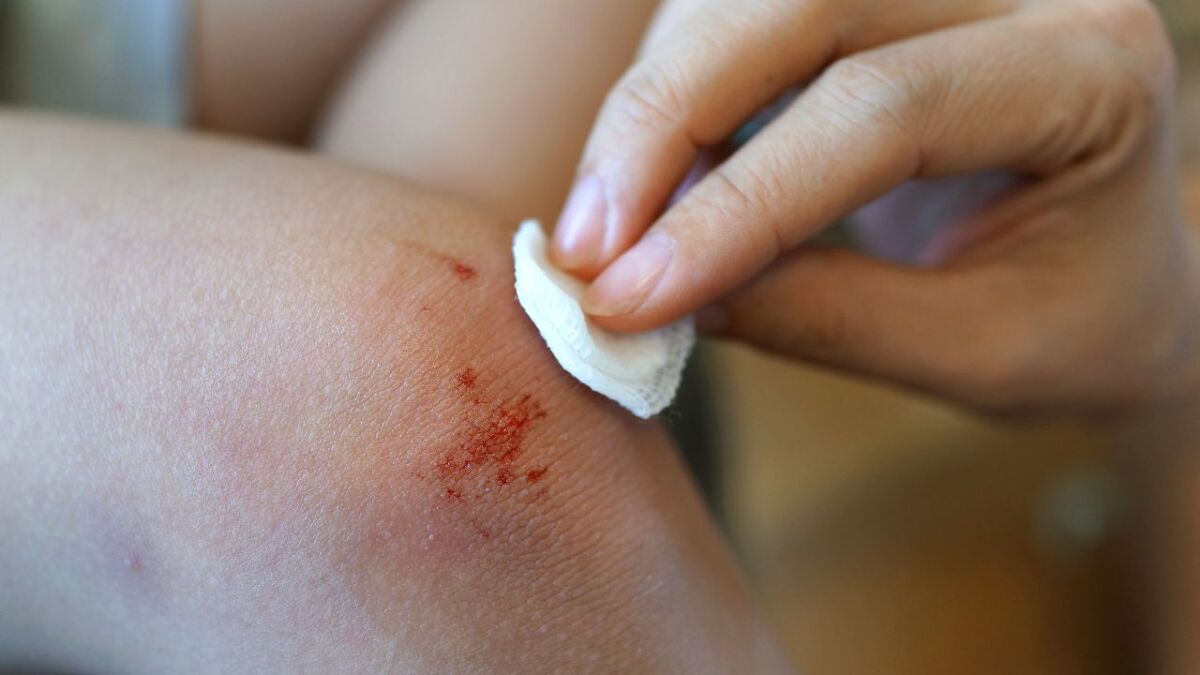
wound care
Nomen
Meaning
Wound care is a crucial skill in the world of survival, bushcraft, and outdoor activities. It refers to the proper treatment and management of injuries or wounds that may occur during adventures in the wilderness. Knowing how to effectively clean, disinfect, and dress wounds is essential for preventing infection and promoting healing. In the context of survival, wound care can mean the difference between a minor inconvenience and a life-threatening situation. Understanding the basics of wound care, such as stopping bleeding, assessing the severity of the injury, and applying appropriate bandages or dressings, is vital for anyone venturing into the great outdoors.

Examples
„I've been out in the wilderness for days now, and my wound is starting to get infected. I need to prioritize wound care and clean it properly to prevent further complications.“
„During our survival training, we learned the importance of wound care in the wild. Even a small cut can quickly become infected if not treated promptly.“
„I was hiking with my friend when he accidentally slipped and got a deep gash on his leg. I immediately took out my first aid kit and started performing wound care to stop the bleeding and prevent infection.“
„In a survival situation, wound care becomes crucial. Without access to medical facilities, we have to rely on our knowledge and skills to properly clean and dress any injuries we sustain.“
„After spending a week in the wilderness, I had several minor wounds that needed attention. I set up a makeshift camp and dedicated some time each day to perform wound care, ensuring they healed properly.“
Origin
The term "wound care" originates from the English language and is derived from the Old English word "wund" meaning "a bodily injury." The concept of caring for wounds has been practiced since ancient times, with evidence of various wound healing techniques found in historical texts and archaeological discoveries.
Throughout history, wound care has evolved significantly, influenced by advancements in medical knowledge, technology, and understanding of the human body. In ancient civilizations, wound care involved basic cleaning and dressing of wounds using natural materials such as leaves, animal fat, and honey. Over time, various cultures developed their own methods and remedies for wound healing.
During the Middle Ages, wound care practices were heavily influenced by religious beliefs and superstitions. It was believed that wounds should be left open to "bleed out" impurities, and various herbal remedies were used to promote healing. However, these practices often led to infections and complications.
The field of wound care experienced significant advancements during the 19th and 20th centuries with the discovery of antiseptics, antibiotics, and sterile techniques. This led to the development of modern wound care practices, including the use of sterile dressings, wound irrigation, debridement, and the promotion of a moist wound healing environment.
Today, wound care is a specialized field within healthcare, encompassing a wide range of techniques and treatments aimed at promoting optimal wound healing and preventing complications. It involves assessing and managing various types of wounds, including acute wounds (such as cuts and burns) and chronic wounds (such as pressure ulcers and diabetic foot ulcers).
Synonyms
Injury treatment, Wound management, Wound healing, Wound dressing, Wound therapy, Wound repair, Wound maintenance, Wound nursing
Antonyms
Heal, Mend, Repair, Treat, Cure, Fix, Restore, Recover
Relatives
First aid, Bandages, Wound healing, Infection prevention, Wound dressing, Wound cleaning, Wound closure, Wound management
Historical and cultural importance
Wound care is a crucial aspect of survival and bushcraft, as it involves the proper treatment and management of injuries in the wilderness. Throughout history, various cultures have developed their own methods and techniques for wound care, influenced by their unique environments and available resources.
In ancient times, civilizations such as the Egyptians, Greeks, and Romans had their own approaches to wound care. The Egyptians, for example, used honey and resin-based ointments to prevent infection and promote healing. The Greeks and Romans, on the other hand, relied on herbal remedies and poultices made from plants like aloe vera and comfrey.
Native American tribes also had their own traditional methods of wound care. They utilized natural materials such as bark, leaves, and animal fat to create poultices and dressings for wounds. These remedies often incorporated medicinal plants like yarrow and echinacea, which were known for their antibacterial and anti-inflammatory properties.
Today, modern wound care practices have evolved significantly, incorporating scientific advancements and medical knowledge. Antiseptics, antibiotics, and sterile dressings are now commonly used to prevent infection and promote healing. However, in survival situations where access to medical supplies may be limited, knowledge of traditional wound care methods can be invaluable.
Understanding the historical and cultural significance of wound care provides insight into the importance of proper wound management in survival situations. By learning from the practices of ancient civilizations and indigenous cultures, we can enhance our skills and knowledge in this essential aspect of wilderness survival.
More information about the term wound care
Wound Care: Essential Skills for Survival
When you find yourself in a survival situation, one of the most important skills you need to have is proper wound care. In the wilderness, injuries can happen at any time, and without access to medical professionals, it's up to you to take care of yourself. Knowing how to clean, treat, and dress wounds can mean the difference between life and death. Here are some essential skills for wound care in a survival situation.
Assessing the Wound
The first step in wound care is assessing the severity of the injury. Take a moment to carefully examine the wound and determine if it requires immediate attention. Look for signs of infection, such as redness, swelling, or pus. If the wound is deep, bleeding heavily, or involves a major artery, it's crucial to take immediate action.
Cleaning the Wound
Once you've assessed the wound, it's time to clean it. Start by rinsing the wound with clean water to remove any dirt or debris. If you have access to antiseptic solutions or wipes, use them to disinfect the wound and prevent infection. If not, you can create a makeshift antiseptic solution using clean water and a small amount of salt or vinegar.
Treating the Wound
After cleaning the wound, it's important to treat it properly. If the wound is deep or gaping, you may need to use butterfly bandages or sutures to close it. For smaller cuts and scrapes, apply an antibiotic ointment to prevent infection. Cover the wound with a sterile dressing or clean cloth to protect it from further contamination.
Dressing the Wound
Properly dressing the wound is essential for its healing process. Use sterile gauze pads or clean cloth to cover the wound. Secure the dressing in place with medical tape or a bandage. Make sure the dressing is snug but not too tight, as it should allow for proper circulation.
Monitoring and Re-dressing
Once the wound is dressed, it's important to monitor it regularly for any signs of infection or complications. Check the wound daily for redness, swelling, or discharge. If you notice any concerning changes, it may be necessary to re-dress the wound and seek medical attention if possible.
Conclusion
Wound care is a crucial skill for survival in the wilderness. By knowing how to assess, clean, treat, and dress wounds properly, you can increase your chances of a successful recovery. Remember to always prioritize your safety and seek professional medical help whenever possible. With the right knowledge and preparation, you can effectively take care of yourself and others in a survival situation.
Back to overview

